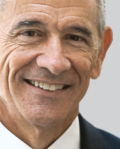We recently received an email from a high school math teacher who attended a three hour PLC overview session we provided for all of the staff members of his K-12 school district. Prior to hearing about PLCs for the first time that morning, his high school had already convened three task forces to meet on a regular basis this school year to resolve the three pressing issues the faculty had identified:
Physical Environment: “This group is mostly concerned with the physical appearance of our school. They have already successfully lobbied for more garbage cans around the school but they looking for a ‘Five Year Plan’ for our building from the School Board.”
Professional Practices: “This group is mostly concerned with the ‘nuts and bolts’ of what teachers do. They are working on a ‘Teacher Policy Booklet’ that would include items such as lateness, attendance, forms to fill out, etc.; union items (dealing with other teachers, student boundaries, ethics issues, benefits, etc. and possibly school policy issues (steps for dealing with students who are not learning?).”
Community Profile: “Our school has become the ‘third choice’ for students in the district as there are two newer schools on the other side of the freeway. We are not doing a good job ‘selling’ the school to the community.”
His question to us was: “In your opinion, do these three Task Forces fit the PLC model?”
We recognize clarity in terms is an important step in creating the shared foundation (mission, vision, collective commitments, and goals) of a successful learning organization. Here is an attempt to establish such clarity among educators attempting to apply PLC practices:
We refer to the school or district — the larger organization — as a PLC. Our definition of a PLC is:educators committed to working collaboratively in ongoing processes of collective inquiry and action research in order to achieve better results for the students they serve. PLCs operate under the assumption that the key to improved learning for students is continuous, job-embedded learning for educators. (DuFour, DuFour, Eaker, Many. 2006. Learning By Doing: A Handbook for Professional Learning Communities at Work. Bloomington, IN: Solution Tree)
Each PLC is organized into a series of high-performing collaborative teams which meet on a regular (weekly) basis to focus on student learning. A team is a group of people working interdependently to achieve a common goal, for which members are held mutually accountable (DuFour, DuFour, Eaker, & Many, 2006. Learning By Doing: A Handbook for Professional Learning Communities at Work. Bloomington, IN: Solution Tree). Collaborative teams are the fundamental building blocks of PLCs.
In addition to structuring and supporting collaborative teams focused on learning, a school or district may also utilize a task force or committee structure to further disperse leadership while addressing current schoolwide/districtwide issues. A Task Force is a temporary group convened to addresses a specific issue/charge. Once the group has fulfilled its charge, the group no longer needs to meet.
The work of task forces could greatly improve school-wide programs, practices, and procedures if the task forces focuses on the right issues and recommends action steps members of the school community should take in order to improve upon the current reality of their school.
Each of the three above-mentioned issues could be effectively addressed by the task forces and the high school could realize a more appealing physical environment; more clearly defined practices & procedures for the adults to follow; more positive media coverage and yetrealize no gains in student learning as a result of the task force work. These topics focus on issues that are outside, rather than within the classrooms.
Therefore, we want to stress two points. First, a school-wide task force in a PLC does not substitute for the work of teachers organized into collaborative teams based upon a shared course, grade level, or interdisciplinary program — teams focused on the critical questions of student learning:
- What do we want our students to learn? (essential, guaranteed & viable curriculum)
- How will we know they are learning? (administer frequent, team-developed common, formative assessments)
- How will we respond when they don’t learn? (timely, directive, systematic intervention)
- How will we respond when they do learn? (timely enrichment/extension)
In a PLC, the work of task forces is temporary, but the work of collaborative teams of teachers is always focused on learning and is ongoing and never ending . . . it becomes “they way we do things” forever.
Second, task forces will not improve either student or adult learning if they focus on issues unrelated to learning. A task force can be a powerful tool, but only if it is focused on the right task.
Posted in:


